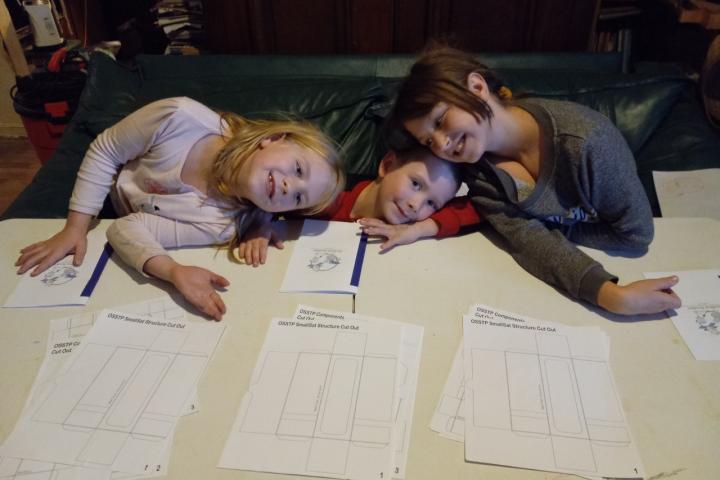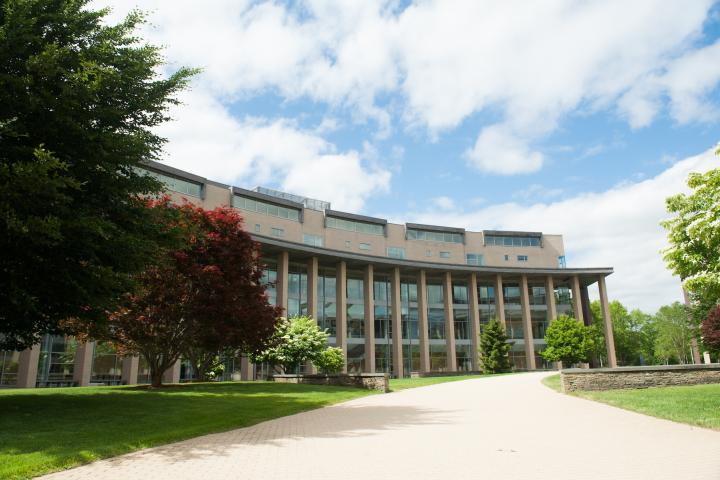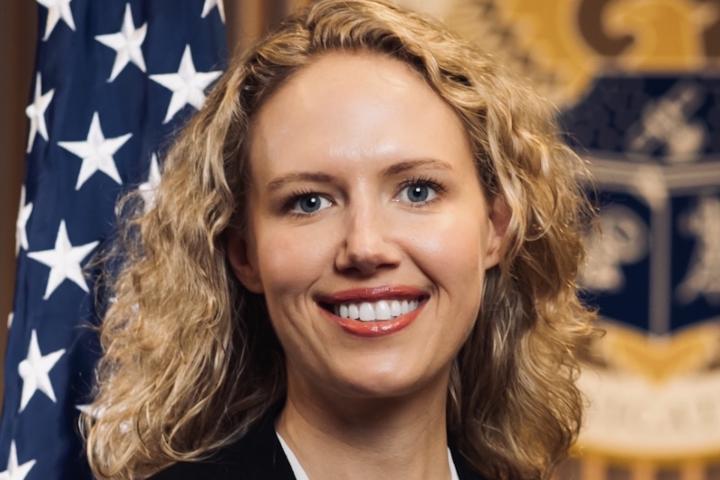STORY: OSSTP Teaches Students Around the World about Satellites through their Build-A-Sat Kits
The Olin Satellite + Spectrum Technology & Policy (OSSTP) Group at Olin has taught almost 800 students around the world about satellites through their hands-on, educational Build-A-Sat Kits. And, they're not done with their mission yet.
Students from OSSTP have written the following article and asked us to feature it to help promote the kit and also show the impact that the project has had so far on the STEM education community. To view the project's progression, see this earlier article from December 2022.
Since September 2022, four Olin Satellite + Spectrum Technology & Policy (OSSTP) Group members – Lillian Shoemaker ‘25, Stephanie Cho ‘25, Angela Huang ‘26, and postdoc Bernard Adjei-Frimpong – have been working on developing a Build-A-Sat Kit under guidance from Whitney Lohmeyer, assistant professor of engineering and head of the OSSTP Group.
The goal of the project was to design an educational kit to spread knowledge and excitement about the world of satellites to 4th - 8th grade students.
In order to achieve this goal, the group developed a packet of resources (fig. 1) including:
- A Mission Manual, coloring book style, to teach students about satellite components
- A Mission Profile Sheet, mad-libs-style, to enable students to design their own satellite mission
- An Introduction Sheet to explain the different steps within the kit and introduce the team (fig. 2)
- Cardstock Component Sheets to allow students to cut out, color, and build their very own Small Satellite (SmallSat) models
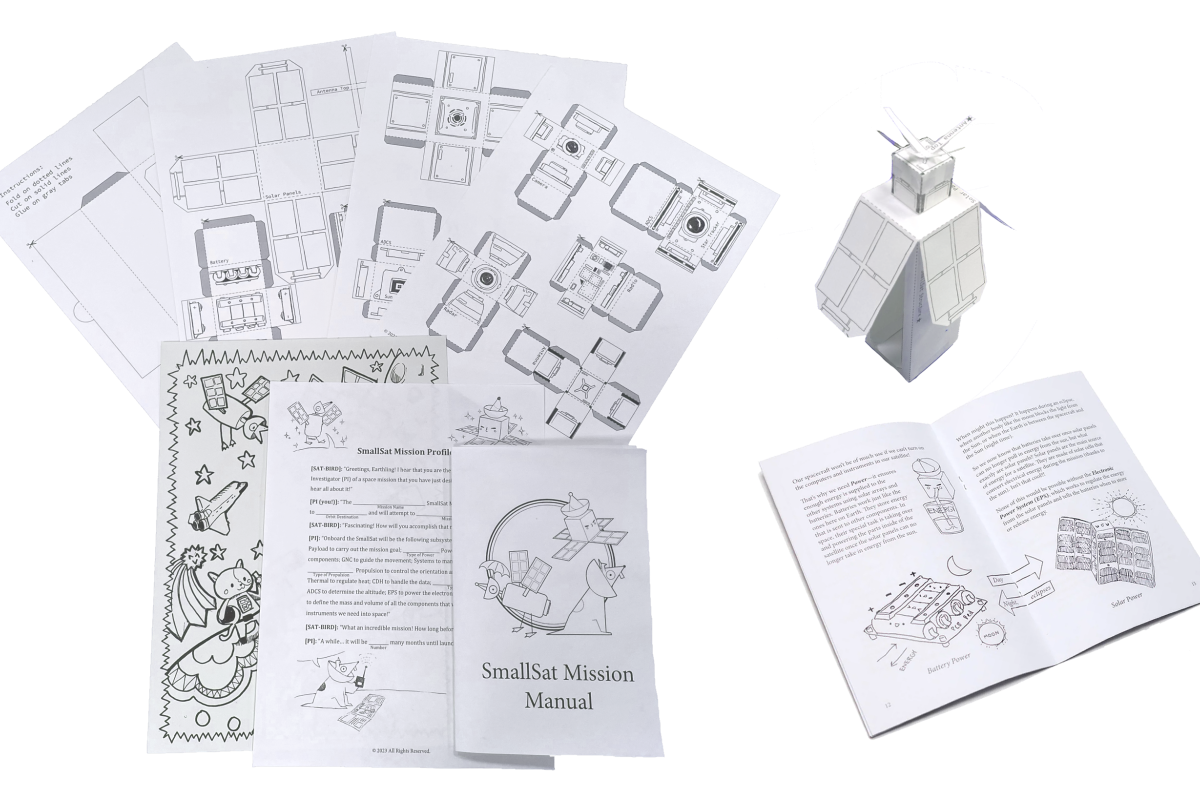
Figure 1: Build-A-Sat Kit Pieces
Throughout the kit’s development, the group put a large amount of focus on the cardstock satellite component pieces. This process included deciding what system components (e.g. electric propulsion) should be included within the kit, how to draw the components to properly reflect their real counterparts, and how to design easy-to-cut sheets for kids of varying ages.
The team went through multiple iterations of the component sheet design and gained valuable feedback, including from their first ever beta testers in West Virginia. The Mission Manual and Mission Profile sheet were developed in parallel and also gained valuable feedback for iteration from beta testing. Afterwards, the group designed the Introduction page to help explain the different kit pieces and how they all fit together.
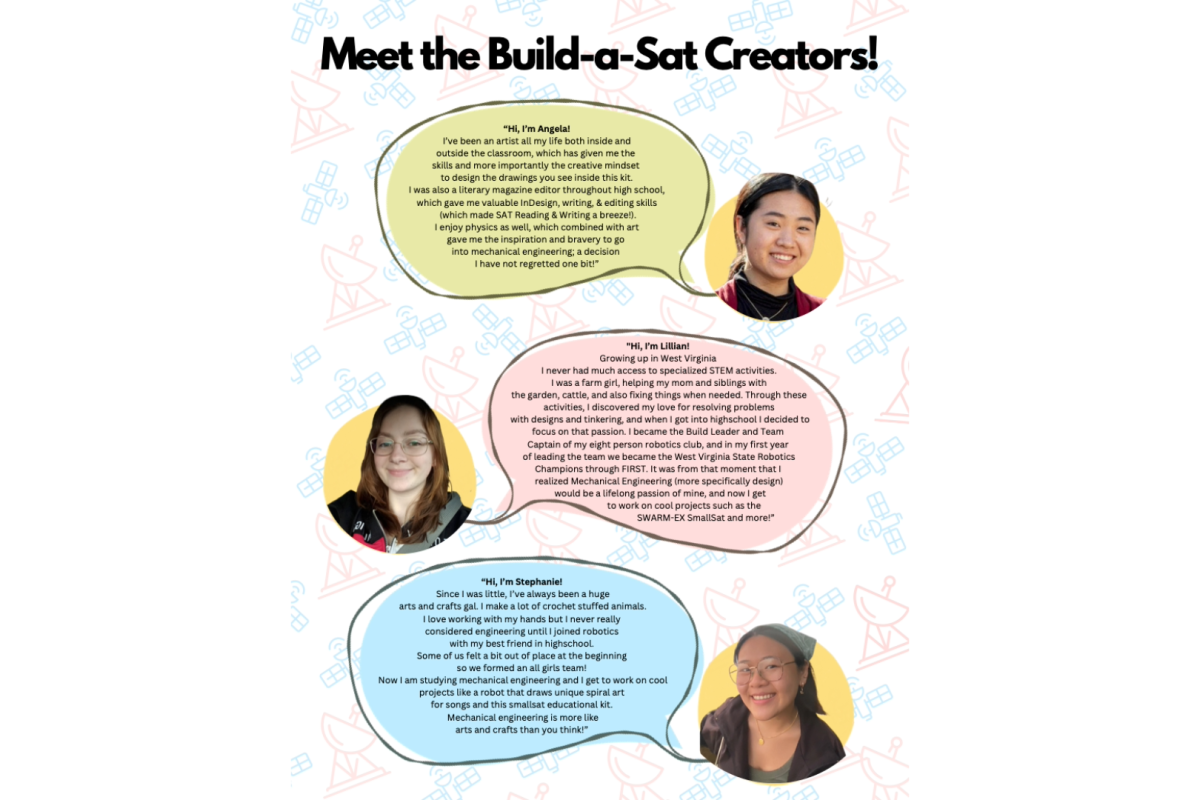
Figure 2: Intro. Sheet 'Meet the Team'
After the kit was developed, the Build-A-Sat Kit group focused on the next task at hand: developing teacher resources (fig. 3). The end goal was to allow any teacher, at any school, to be able to easily run a successful intro-to-satellites classroom session using the kit.
In order to get real-world feedback, the group worked through the spring semester and the summer of 2023 to bring Build-A-Sat Kits to dozens of classrooms, camps, libraries, and YMCAs. They test-ran different classroom approaches, edited the kit to be accessible to all student types, and refined the accompanying lesson plan to be easy to follow.
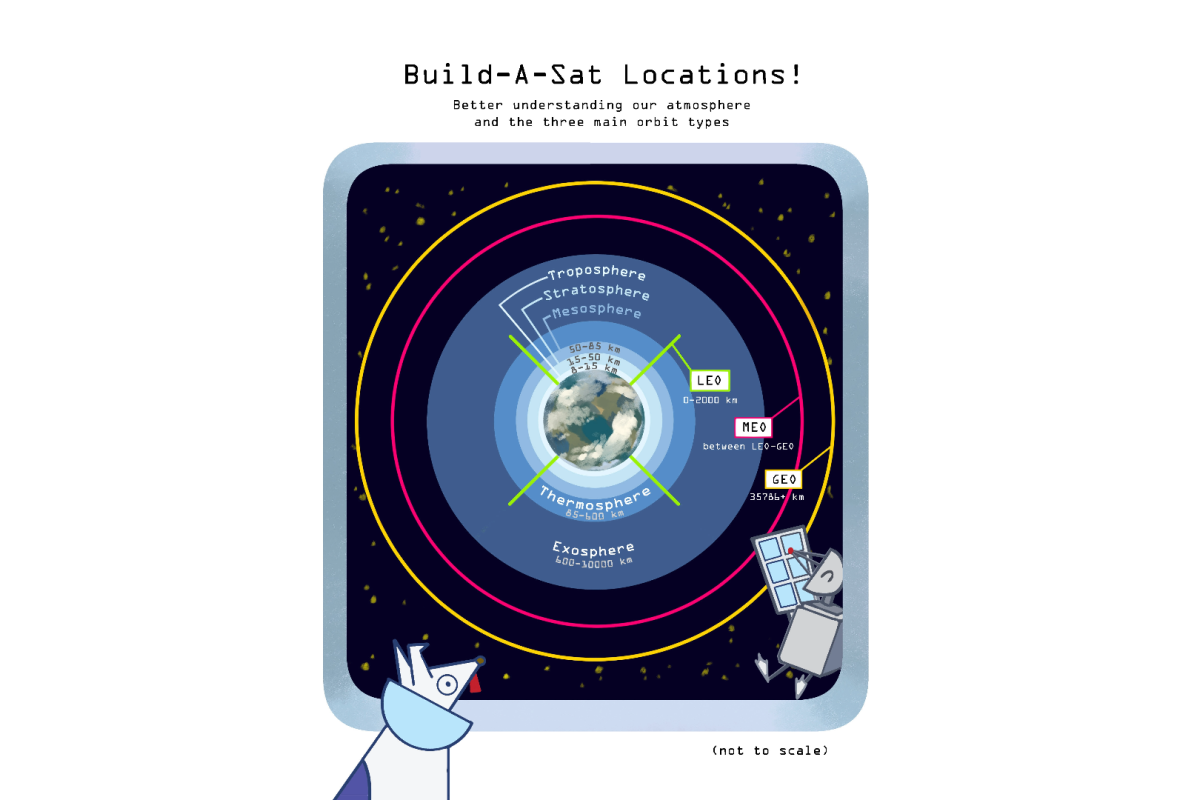
Figure 3: Teacher Resource Orbit Poster
Throughout this testing stage, the team was able to reach 799 students all over the United States and overseas in Ghana (fig. 4).
Over the course of the spring and summer sessions, the group iterated their lesson and product design, made the SmallSat Components easier to cut based on student feedback, and made an autonomous lesson plan for teachers to use on their own. This has enabled hundreds of space-loving students to design their own satellites (fig. 5).
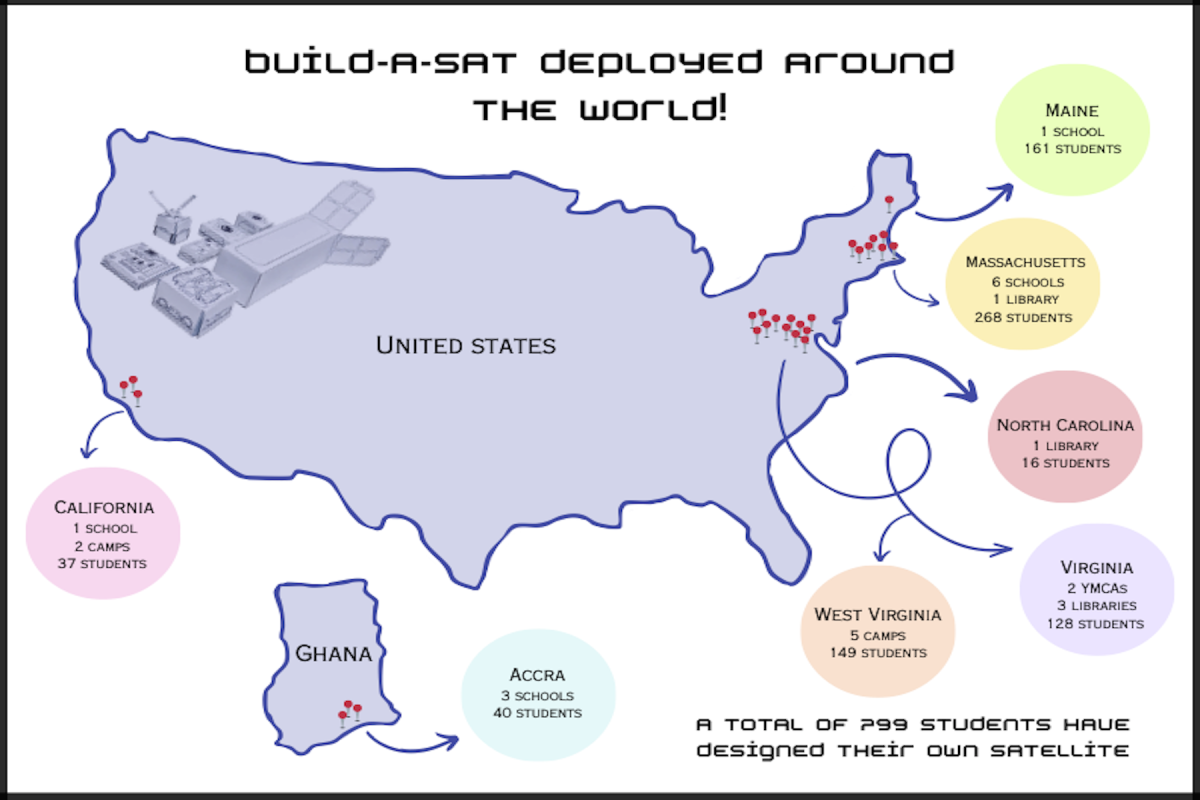
Figure 4: Map of Build-A-Sat Kit Lessons
Although the kit and accompanying teacher resources are now in distribution, the group isn’t done with their mission yet.
They plan to run even more sessions this academic year, set up teacher workshops regarding the lesson plan to further iterate them, and potentially to create new approaches for future educational kits.
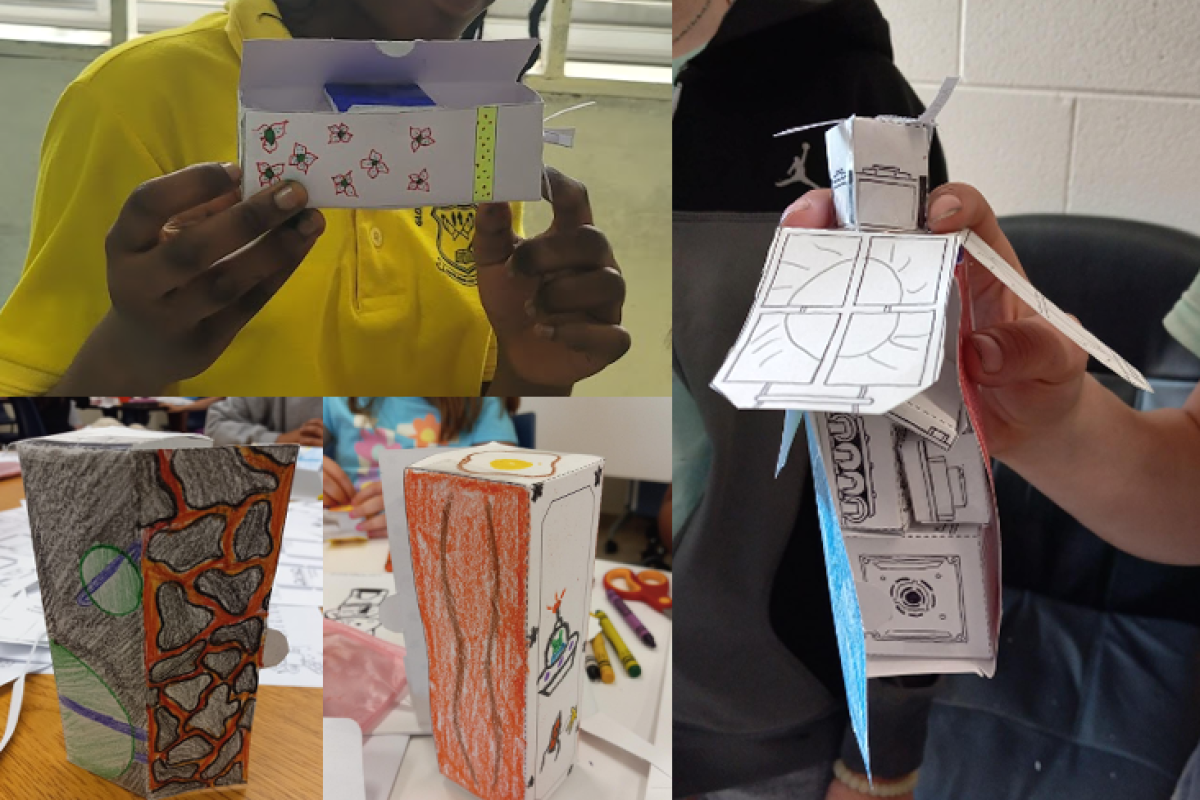
Figure 5: Student Satellite Designs
The Build-A-Sat Educational Kit is currently featured for sale on the site of Emmy-nominated media host, science communicator, and engineer Emily Calandrelli, also known as “TheSpaceGal.”
The team hopes to eventually turn the kit into a non-profit organization with the goal of using proceeds from sales to support kit accessibility for kids in underprivileged and rural areas.
The Olin Satellite + Spectrum Technology & Policy (OSSTP) Group focuses on exploring real-world, project-based learning with apprenticeship-styled educational experiences in the field of satellite communications that are deeply-rooted in external collaboration. The OSSTP Group consists of a team of space and spectrum enthusiasts at Olin College working to develop technology and influence policy on satellites and spectrum with a vision of creating a safe and sustainable space environment for generations to come.
To find out more, visit: https://www.osstp.org/
